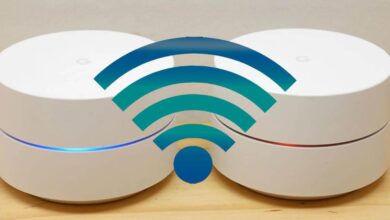
It is no secret to anyone that wireless networks are increasingly becoming a necessity for human beings because thanks to them a wide variety of technological functions and activities can be carried out that are very important for the advancement of humanity.
In the case of the Wireless LAN network or also known as WLAN, you can use the WLC or Wireless LAN Controller, which is intended to centralize the control of Access Points or Access Points (APs). In this way, they will not have to grant a separate control to each of them.
So that you can understand all this much better, here we will explain what WLC is, how it works, and what its basic functionalities are on the network. For this, follow in detail everything that we will teach you below.
What is a Wireless LAN controller and what is this enterprise wireless network component for?
The main objective of the WLC or Wireless LAN Controller is to be able to centralize all the control of the access points, in this way it will be avoiding to delegate control for each one of these points. Therefore, the AP will no longer work automatically, but will become what is called a lightweight AP “LWAP”, for which it will have the collaboration of the control and provisioning protocol for Wireless Access Points “CAPWAP “

All of this will cause LWAPS to send all data to the WLC. All this functionality will allow roaming, define wireless networks “WLANx – SSIDs” and authentication. For this, there is a combined WLC and LWAP design in a large WLAN network, and you will not be creating several separate networks for them.
Also see:
Additionally, the primary function of traditional wireless LAN controllers is to maintain the configuration of wireless access points. But they can also have many other functionalities.
Accordingly, WLCs are capable of performing many other functions such as the ones we will show you below:
What are the main functions of a wireless network LAN controller?
These wireless LAN controllers are capable of various types of functions and not just take care of setting up access points.
That is why here we are going to show you what are the main functions of these LAN controllers:
Access Point Configuration
This is the main function that the WLC fulfill and that many of the users believe that it is the only one that they can carry out. However, they also have the ability to perform some other important functions on the network system. In this case, its objective is to centralize the control of the APs, and thus not delegate control to each of the APs. In this way, the APs will no longer function autonomously but will now become a lightweight LWAP AP.
Also see:
Management and operation
These two tasks allow you to deploy and operate the wireless local network in a much simpler way, so you will not have to have to repeat each of the operations in all APs on the local network. Therefore, this allows you to configure, monitor and diagnose any type of problem that is generated on the network.
Another of its functions is that it allows sending and receiving alarms when any type of problem has been detected on the network. In order to ensure homogeneous operation on the network, including software upgrades of operating the AP, ensuring that everyone can have the same version.
Traffic aggregation and processing for wireless devices such as smartphones and tablets
It is worth mentioning that this is one of the functions that is not performed all the time on the WLC, for this it will depend on the network architecture used. If all the traffic from wireless devices is routed through the controller, then you can plan things with that traffic, either to encrypt it or separate it so that it is sent to different networks or to be filtered to prioritize it according to the established quality policies.
Local wireless functions
In the case of the radio characteristics of wireless technology, it is advisable to use the coordination and protection mechanisms in the radio spectrum. All this causes a more efficient use of it in a certain local area.
Therefore, the mechanisms for each AP to use a different portion of the electrical spectrum are grouped here. In this case, the mechanisms aimed at optimizing the distribution of traffic between APs and wireless devices can detect interference and even geographically position the devices using radio triangulation.
Non-WiFi functions
Many of the controllers usually include functions that have nothing to do with what WiFi technology is, such as the functionality of the server for printers, that of the network hard disk, or even that of the traditional fixed local network switch itself. Nowadays WiFi networks have positioned themselves strongly in the market, and this is mainly due to the Cloud model, which is also known as the cloud.
In this way, the local WLC disappears and some of its functions are transferred to the cloud, thus being implemented centrally. In this way, the traditional WLC has become a specific management element for WiFi, so it can be deployed in the form of software at any point on the network that has IP connectivity with the APs.



